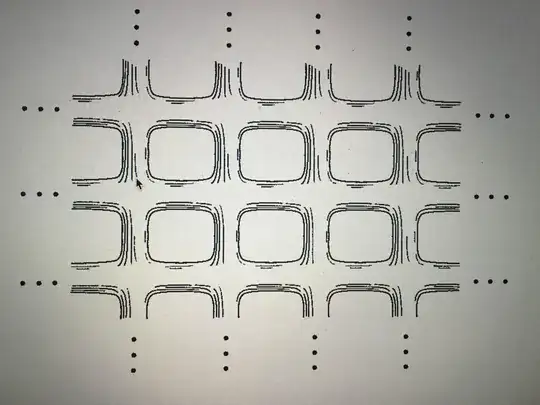I want to prove that the infinite-holed torus and the infinite-jail cell window have one end but the doubly infinite-holed torus doesn't, my definition of one end is the following:
A locally compact (not compact) space $X$ has one end if for every compact $C \subset X$ there is a compact $K$ such that $C \subset K \subset X$ and $K^{c}$ is connected.
But the thing is that I don't know how to wave my hands here. Can someone help me with this issue?
The pictures:
Thanks a lot in advance.


